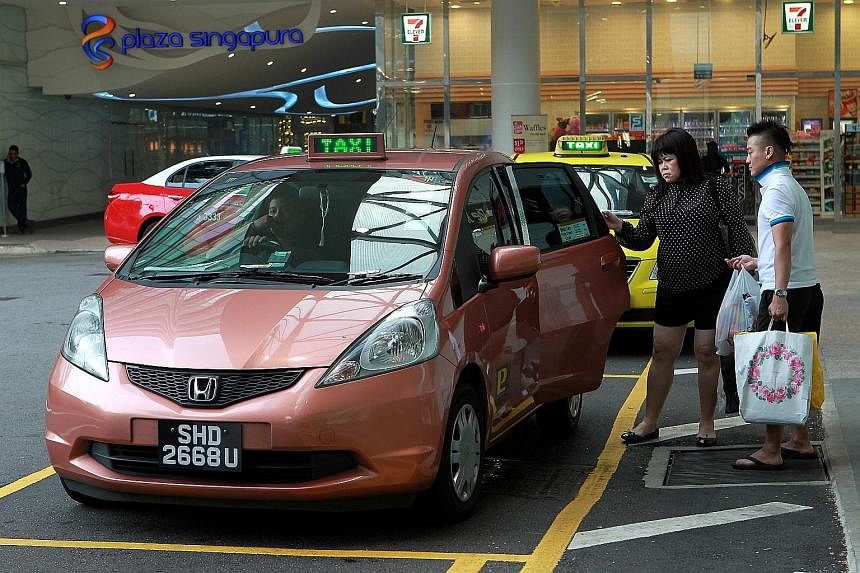Only one of the six cab companies here has met taxi availability standards set by the transport authorities.
Comfort managed to fully meet the requirements, while CityCab, TransCab and Premier had lapses.
SMRT and Prime failed to meet the standards and will be fined, the Land Transport Authority (LTA) said yesterday.
SMRT has been fined around $45,000 for failing to meet standards in the first two months of the January to April review period, while Prime has to pay about $44,000 for flunking in the first three months. They have two weeks to pay the fines, which are based on a firm's fleet size.
Reacting to the penalty, Prime Taxi general manager Eric Ang said: "We've been trying our best and we will continue to try our best."
SMRT spokesman Patrick Nathan said the company had been "stepping up efforts" to help its cabbies log the minimum daily mileage of 250km. "A recent initiative is the introduction of a taxi availability mileage counter... which serves to help (drivers) monitor their travelled mileage," he added.
Besides meeting the minimum daily mileage, taxi operators have to make sure a high percentage of their fleet is operating during peak hours. For instance, from 7am to 11am and 5pm to 11pm, 85 per cent of cabs have to be on the road - up from 70 per cent when the standards were introduced in 2013.
The LTA's action comes amid a public debate about how the taxi service, a perennial bugbear with commuters, can be improved. Many welcome the introduction of taxi app services, such as Uber and GrabTaxi, as these offer alternative rides. But taxi operators have argued that the new players are thriving on unfair competition.
The LTA is meanwhile working on a set of regulations for these new services, which are disrupting taxi operators the world over and causing many cities to ban them.
The latest results took into account a new method of measuring availability, the LTA said. It is now based on a taxi company's hired- out fleet instead of its total fleet. The authority said the move was in response to feedback from the National Taxi Association and taxi firms, and was applied retrospectively from Jan 1 this year.
LTA said this was a more accurate way of measuring availability. Cabbies would not have to increase their mileage to make up for the non-performance of unhired taxis.
The percentage of unhired taxis across the industry in April was close to 4 per cent.
Commuters, however, are unconvinced that the standards have improved cab availability significantly on the ground.
Tech consultant Richard Ho, 55, said: "They have helped a little, but so have apps like GrabTaxi. Where they haven't helped, though, is on rainy days or on Friday nights."
Church administrator Chan Whye Chuen, 66, said he still finds it hard to hail a cab. "When I work late and I leave around 9-10pm, I can wait half an hour to 45 minutes for a cab. Sometimes, I call for a cab but there will be none available."
Lawyer Bryan Tan, 44, said apps like Uber have made it easier to get a cab. "A driver from one of the smaller firms told me he hardly gets any bookings from his company, but he gets a lot from these apps. To me, they are a lot more convenient."


